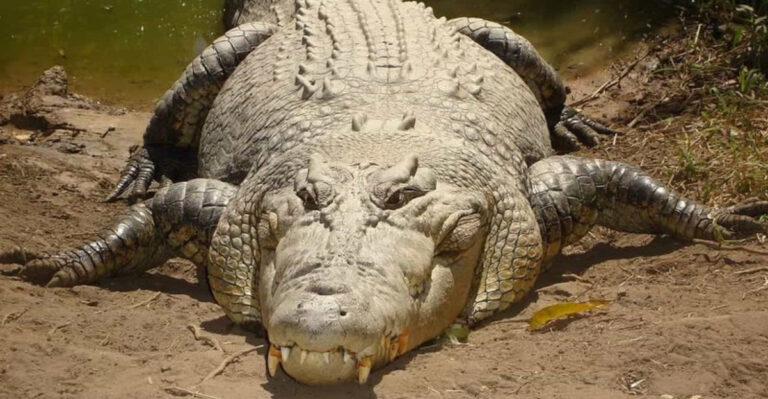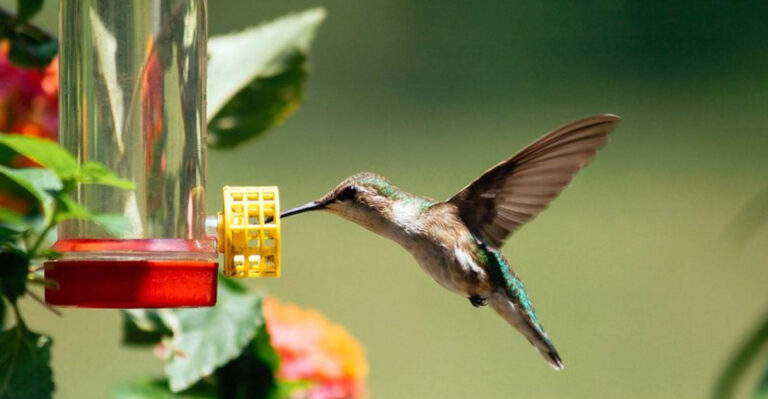How Anglers Catch Big Redears In Shallow Water
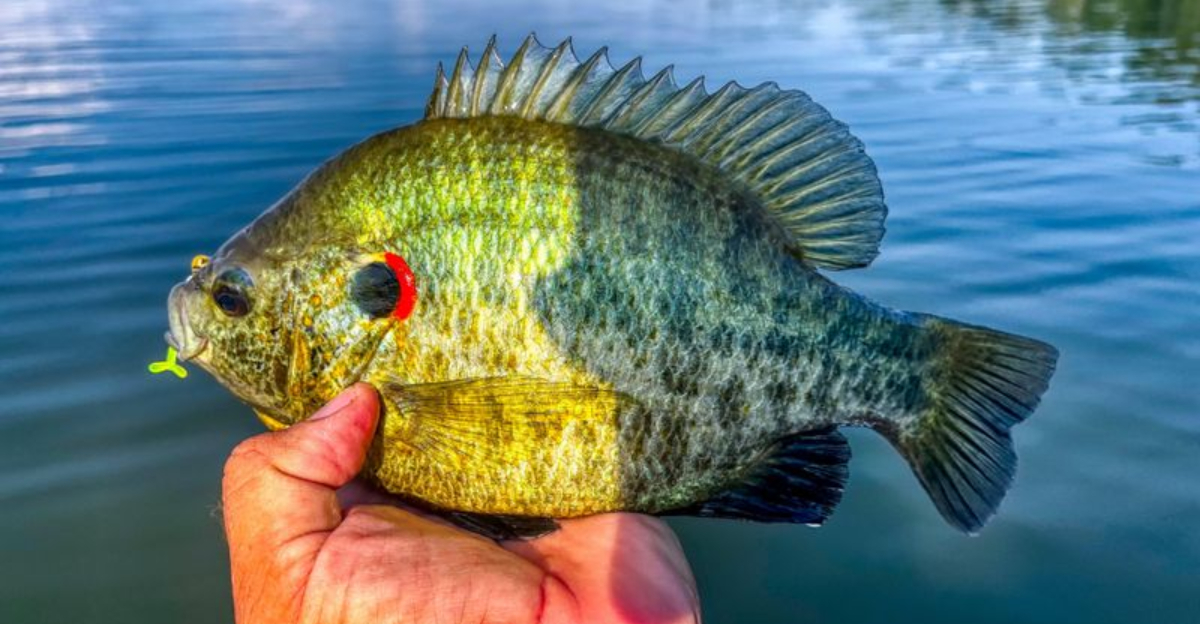
Redear sunfish, often called shellcrackers by longtime anglers, are prized catches that can grow to impressive sizes.
These plate-shaped panfish with the distinctive red ear tab love shallow water, especially during spawning season. Finding and catching trophy redears requires specific techniques and an understanding of their shallow-water habits.
1. Shallow Beds Signal Spawning Season
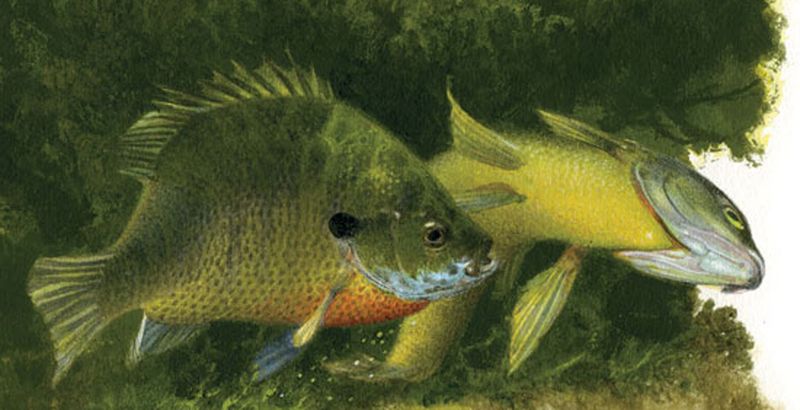
Look for distinctive circular depressions in sandy or gravelly bottoms near shorelines. During spring, male redears create these plate-sized nests in water as shallow as 1-3 feet deep.
The beds appear lighter than surrounding bottom, often clustered in colonies. This spawning activity creates perfect targeting opportunities for anglers seeking trophy-sized fish.
2. Warm Water Fires Up Their Metabolism
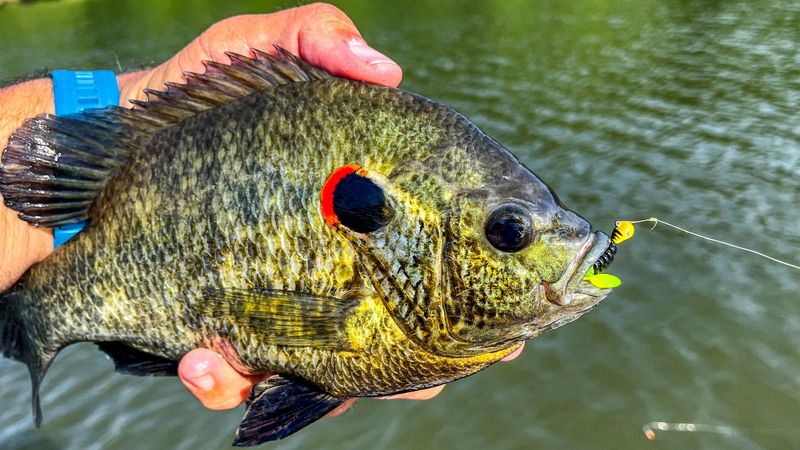
Sunshine transforms shallow bays into fish feeding zones. When water temperatures climb above 65°F, redears become increasingly active hunters, especially around shoreline vegetation.
Morning fishing produces steady action, but the real trophy potential comes during midday heat. Smart anglers monitor water temperature rather than clock time to determine prime fishing windows.
3. Snails And Shellfish Keep Them Close

Nicknamed “shellcrackers” for good reason! Their powerful throat teeth crush mollusks that other sunfish ignore. Areas with abundant snails, small mussels, or crayfish naturally attract bigger specimens.
Focus on muddy bottoms near vegetation edges where these food sources concentrate. The crushing sound of redears feeding on shells can sometimes be heard in quiet conditions.
4. Midday Often Produces The Best Action

While conventional wisdom suggests fishing early or late, trophy redears break this rule. Their peak feeding periods frequently align with the brightest, warmest hours between 10am-2pm.
During spawning season, males guard nests most aggressively under high sun. Position yourself to cast toward shorelines with maximum sunlight penetration for optimal sight fishing opportunities.
5. Live Bait Makes All The Difference
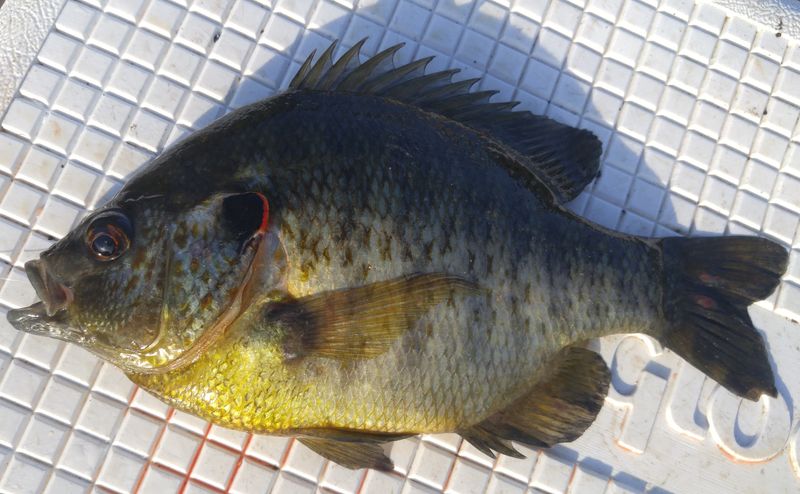
Red wigglers consistently outperform other offerings for trophy redears. Thread these wigglers onto a small hook leaving both ends free for maximum action.
Cricket and waxworm combos create an irresistible presentation when other baits fail. For truly selective fish, collect small freshwater snails from the fishing location and crack them slightly before baiting.
6. Light Line Is Essential In Clear Water

Veteran redear hunters rely on 4-pound test fluorocarbon for its near-invisibility. Match this with the smallest split shot you can cast effectively to maintain a natural presentation.
Position weights at least 12 inches above your hook. Ultra-light spinning reels with smooth drags prevent line breaks when trophy specimens make powerful runs toward deeper water or nearby structure.
7. Fly Rods And Float Rigs Give You Finesse
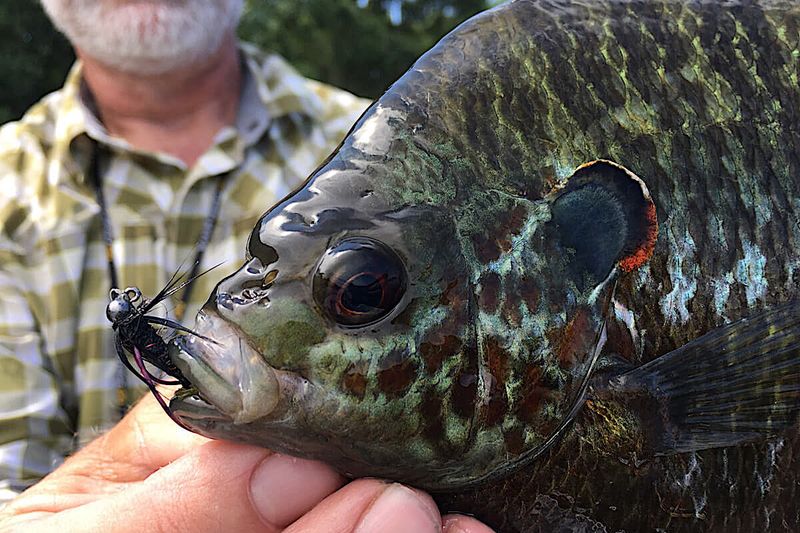
Fly fishermen score impressive catches using size 12-14 wet flies that mimic aquatic insects. The gentle presentation prevents spooking wary fish in gin-clear shallows.
Traditional anglers achieve similar stealth with pencil floats or small pear-shaped bobbers. Adjust depth until your bait suspends just above bottom vegetation where redears forage for food.
8. Watch For Redear Beds Near Cover
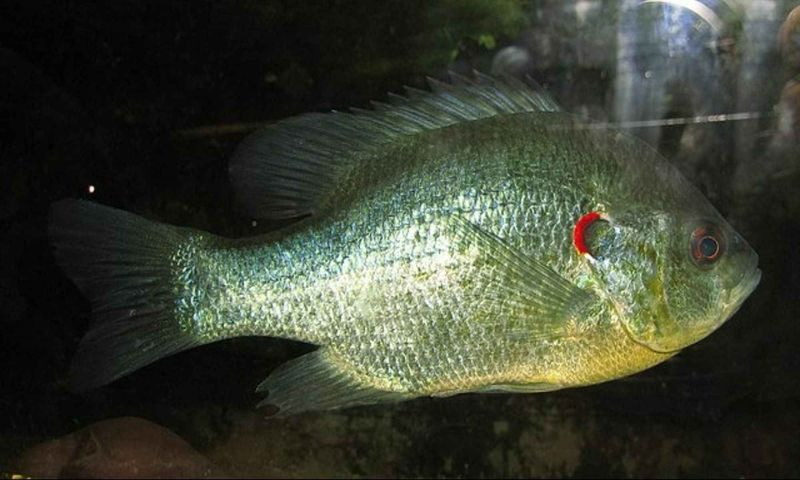
Trophy redears establish territories near fallen trees and submerged brush, but not directly in heavy cover. Their preference for slightly deeper beds than bluegill creates distinctive patterns.
Scan for beds along the edges of lily pads and eelgrass. Polarized glasses reveal these subtle depressions that might otherwise remain invisible beneath surface glare.
9. Wade Slowly Or Fish From The Bank
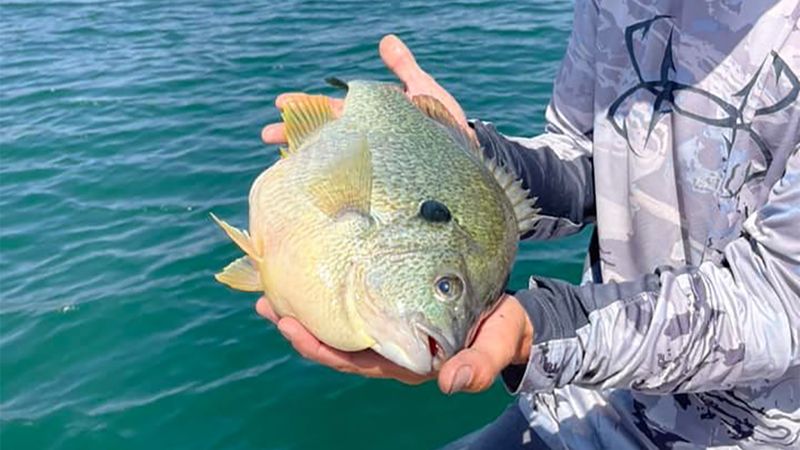
Stealth trumps mobility when targeting shallow-water redears. Their lateral line system detects even slight vibrations, making them scatter before you spot them.
Felt-soled boots minimize underwater noise when wading becomes necessary. Bank fishing often proves more productive than boats, allowing anglers to remain motionless for extended periods while making precise casts.
10. Big Redears Often School With Smaller Ones
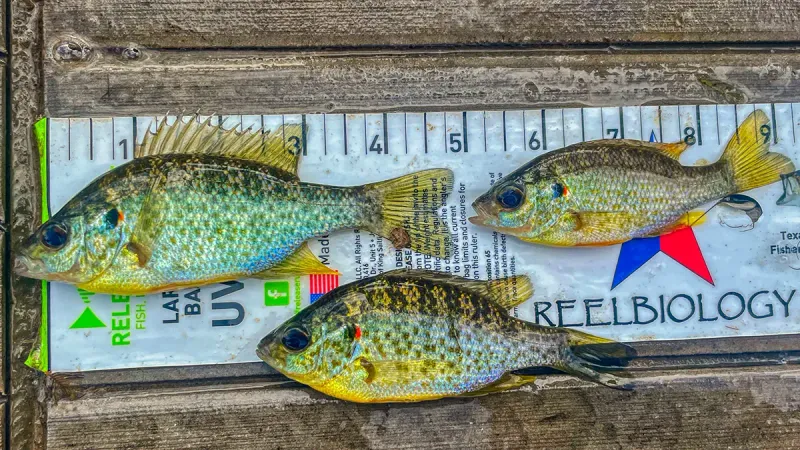
Catching numerous small redears signals you’ve found prime habitat. Monster specimens frequently lurk among their smaller relatives, requiring more patience to hook.
After landing several average fish, switch to larger baits and slow your presentation. Trophy redears typically hold slightly deeper than their smaller counterparts, often just beyond the main concentration.
11. Many State Records Were Caught In Shallow Zones
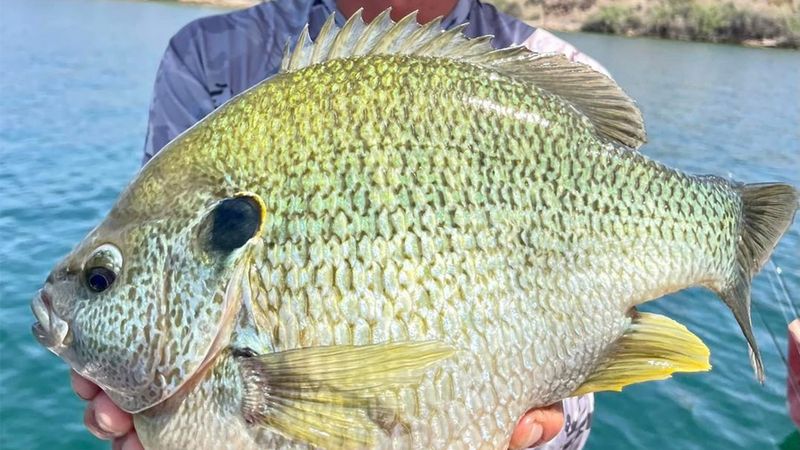
Florida’s 4.86-pound state record came from water shallow enough to wade. Similarly, North Carolina’s 4.12-pound behemoth was taken from a shoreline area less than knee-deep.
Record hunters focus on lakes with established shellfish populations and minimal fishing pressure. Southern impoundments with stable water levels consistently produce the largest specimens during May and early June.
12. Conservation Helps Keep Trophy Redears Around

Selective harvest maintains healthy populations of trophy-potential fish. Taking home smaller males while releasing females over 10 inches preserves genetic lines that produce giants.
Photograph your exceptional catches quickly and release them with wet hands. Some anglers voluntarily implement personal limits below legal requirements during peak spawning periods to ensure sustainable fishing for future generations.

